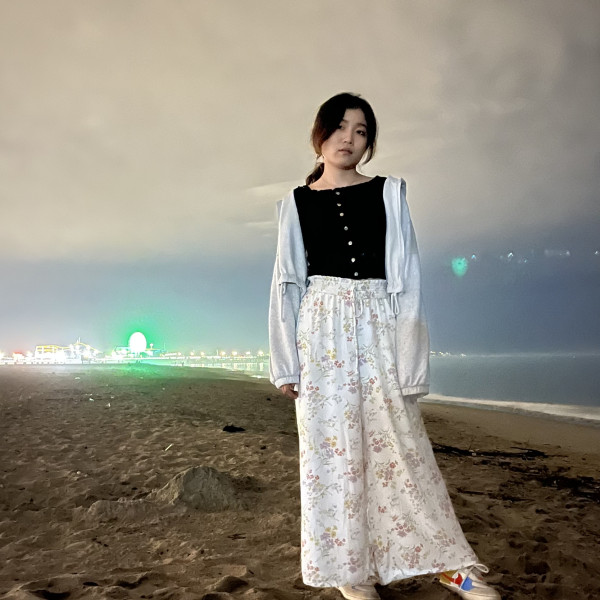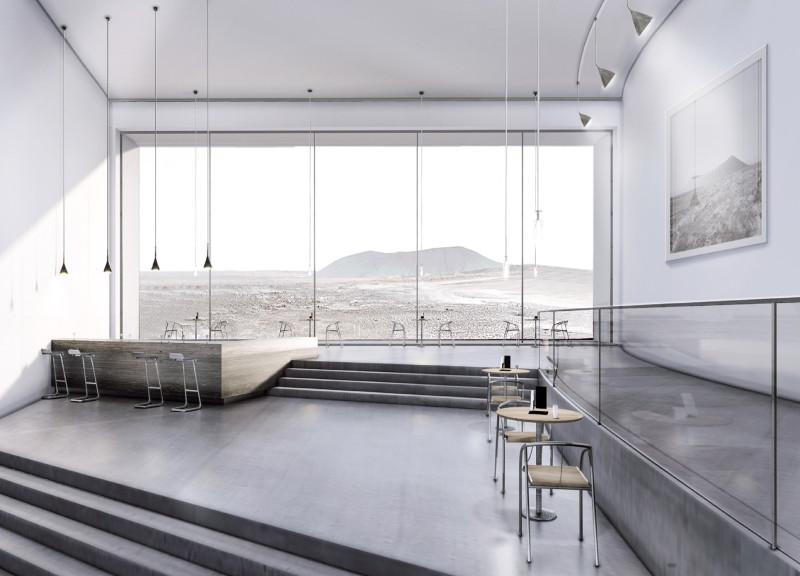5 key facts about this project
The primary function of the Visitor Center is to educate visitors about the geological significance of the area while accommodating various visitor needs. It features informative exhibition spaces, an information desk, and viewing platforms that provide expansive vistas of the landscape. The design employs a radial layout that encourages flow and interaction among different areas, allowing easy access to essential facilities.
A noteworthy aspect of this project is its responsiveness to the surrounding topography. The building's form reflects the uneven terrain of lava fields, with undulating surfaces that evoke the natural landscape. This integration minimizes visual disruption and contributes to the overall coherence of the site. The use of concrete as a principal material parallels the local volcanic rock, reinforcing a sense of place while ensuring durability against the region's harsh weather conditions.
The extensive use of glass in the design enables natural light to permeate the interior, creating a connection with the external environment. These large windows not only frame views but also highlight the site's natural beauty, fostering a sense of tranquility. The use of aluminum accents offers a modern contrast, enhancing the building's aesthetic while aligning with contemporary architectural practices.
The interior is designed with warm wood elements to create inviting spaces, offering an essential counterbalance to the starkness of concrete and glass. This combination of materials reflects sustainability principles and showcases a harmonious blend of traditional Nordic design influences.
Sustainability is a core principle guiding the design, with passive strategies incorporated to reduce energy consumption. The orientation of the building maximizes natural ventilation and light, decreasing reliance on artificial heating and cooling systems. This approach aligns with Iceland’s commitment to environmental stewardship.
For those seeking to gain a deeper understanding of the architectural ideas behind this project, exploring the architectural plans, sections, and detailed designs can provide further insight into the innovative approaches employed throughout. The unique combination of functionality, materiality, and integration with the landscape positions the Iceland Black Lava Fields Visitor Center as a significant achievement in contemporary architecture. Interested readers should explore the project presentation for a comprehensive view of its features and design intricacies.


 Mingxun Zou,
Mingxun Zou,  Yang Du
Yang Du 




















